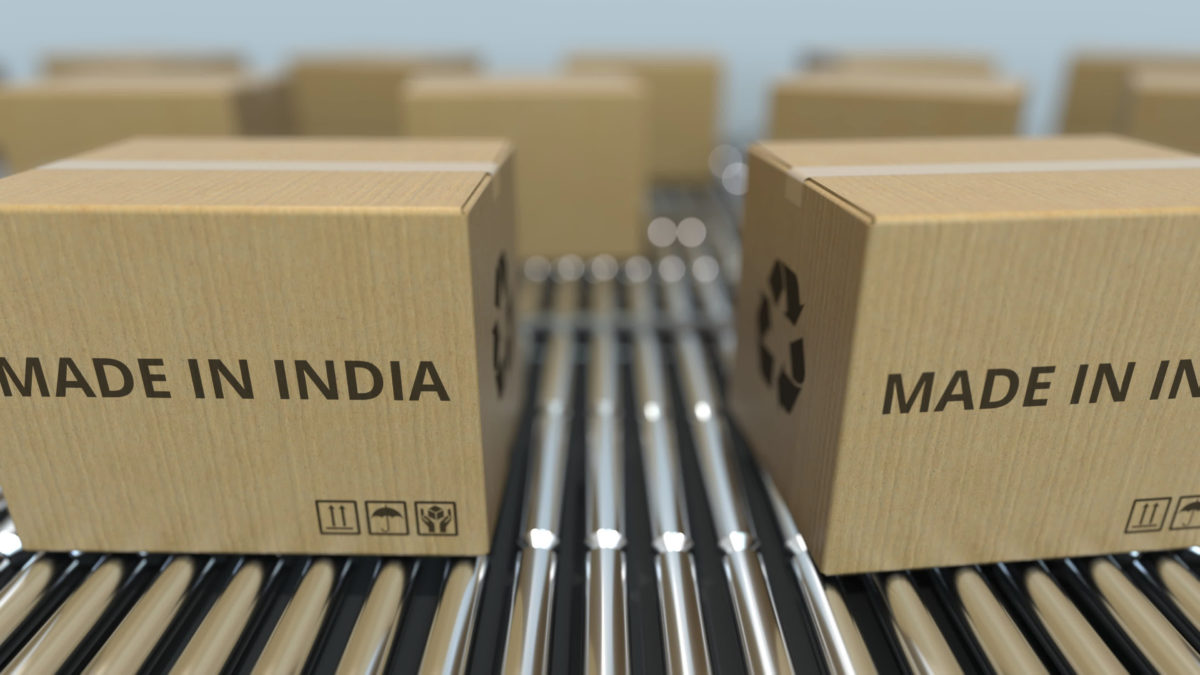Sino-Indian crisis has made India find ways to transition from the service sector to the manufacturing sector.
The proclamation made by India on Atmanirbhar Bharat (self-reliant India), at a time when Covid-19 is having a negative impact on the Indian economy and unfriendly neighbours showing signs of aggression across borders, seems to be a defining moment of resilience. The debates on self-reliant India have gained momentum. Some suggest it is high time India moved towards self-reliance and reduced its dependency on its neighbour China. Others argue whether India is prepared enough to achieve self-reliance in the current circumstances.
India has obviously been transitioning from a middle power to a great power status. Even in the worst-case scenario, when India became a victim of both technological and economic sanctions after its nuclear test in 1974, it had shown its resilience and moved ahead with its nuclear and other strategic programmes. Both the United States and the West wanted to see India crippling in every sphere. The sanctions regime proved to be a boon in disguise and India became self-reliant in its strategic programmes. India’s dependency on the US in particular got decreased. The US had stopped cooperation with India and also pressurised other powers not to cooperate with India. India did pay the price in terms of time and money, but became self-reliant. India constructed all its Pressurised Heavy Water Reactors (PHWR) without any cooperation from elsewhere.
It was because of India’s commitment and dedication that success in strategic programmes was achieved. No country will ever support India in enhancing its strategic capabilities whether it has to do with nuclear, space or state-of-the-art defence technologies. If India can achieve such prowess, then why can’t it improve its overall capabilities in the manufacturing sector? India’s dependence on China in this sector is quite huge. It is high time India re-invented itself and moved towards developing a strong base in the manufacturing sector. There are, however, a number of challenges in building a strong infrastructure for the manufacturing sector.
In the current scenario, after border security and tackling the Covid-19 pandemic, India would require to put emphasis on the ways and means to revive the economy if India has to become self-reliant. In the past, India had put more emphasis on the growth of the public sector with massive investments in basic and heavy industries. Now, there is a strong move to build an ecosystem having a robust public private partnership (PPP). However, the roadmap for PPP is yet to be articulated, especially from the point of view of the manufacturing sector.
With production facilities closed and business centres on a lockdown mode, world trade has gone into a tailspin. The initial announcements by the Prime Minister and the Ministry of Finance, extending financial packages to business, corporate houses as well as the general public have so far not produced the desired results. In the given circumstances, the government will have to do much more to fuel demand than announcing disjointed reforms in instalments. Whether India has to come up with an economic stimulus in the current scenario remains a part of the discourse.
The Central Board of Direct Taxes (CBDT) is introducing faceless scrutiny assessment and communication through e-mail with taxpayers. This will avoid frequent visits to the tax office and is expected to bring down possible harassment and tax terrorism. The regressive tax system has less to do with the political dispensation and is more of a legacy issue. The government can either accept its inability to rein in errant officers and correct the aberrations or bite the bullet and introduce structural tax reforms. A regressive tax regime will neither help ease of business nor fuel demand among the consumers which is extremely important at this stage of low demand.
Speaking at the India-US Business Forum, the Prime Minister has appealed for increased investments in India, invited US companies to partner with Indian industry and lauded the general atmosphere of transparency in India. But for a speedy economic recovery, the government will have to do much more than what it is attempting at present.
Considering the scenario where companies across the globe are uprooting their base from China and relocating to other parts of the world, it presents a window of opportunity
More importantly, very little has been done so far on the technology and innovation aspects of the economy in general and defence, IT and Artificial Intelligence sectors in particular. India has to come up with a well-articulated science and technology plan, which, in turn, would help develop a robust base for the manufacturing sector. India would require to prioritise the areas and also enhance research and development in all spheres of the manufacturing sector. If India can put all its emphasis on building infrastructure for manufacturing, then only can it think of becoming less dependent on China. Undisputedly, the current Sino-Indian crisis has opened the door for India to think differently and find ways and means to transition from the service sector to the manufacturing sector.
Arvind Kumar teaches Geopolitics and International Relations at Manipal Academy of Higher Education (MAHE), Manipal. Seshadri Chari is a well-known political commentator and strategic analyst.

